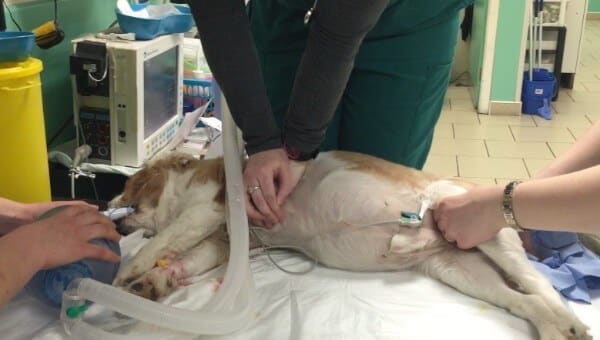september, 2024

Course Details
Week 1 Principles of Anaesthetising Critical Patients Anaesthetic risk in the compromised patient The importance of patient history and physical examination Diagnostic tests Patient stabilisation Anaesthetic protocol, monitoring and recovery Learning objectives
Course Details
Week 1
Principles of Anaesthetising Critical Patients
Anaesthetic risk in the compromised patient
The importance of patient history and physical examination
Diagnostic tests
Patient stabilisation
Anaesthetic protocol, monitoring and recovery
Learning objectives
After completion of this week, participants should be able to:
Understand why critical patients are at an increased anaesthesia and sedation risk
Understand that improving patient safety requires a holistic, overall management process, not simply using “the best drug protocol”. This will include consideration of:
What pre-anaesthetic tests may be required and the benefit they offer
What pre-anaesthetic stabilisation may be required
Recall an introduction into the type of patient monitoring which is required during the peri-anaesthetic period
Understand general principles for appropriate anaesthetic drug protocols for the critical patient
Week 2
General Approach to Adverse Events and Introduction to Anaesthetic Complications
Near misses and adverse events
Minimising adverse events by preparation
Checklists and non-technical skills
Common anaesthetic complications
Learning objectives
After completion of this week, participants should be able to:
Name the three steps necessary for approaching adverse events and discuss why they are important, including methods in which near misses and adverse events can be minimised in practice
Understand the role of human factors in patient safety and the value of checklist use in anaesthetic practice
Give an overview of what anaesthetist non-technical skills (ANTS) are and be able to begin using them in clinical practice
Know the most common anaesthetic complications encountered in small animal practice
Week 3
Cardiovascular Complications
Alterations in heart rate:
Bradyarrhythmias
Tachyarrhythmias
Alterations in blood pressure:
Hypotension
Hypertension
Learning objectives
After completion of this week, participants should be able to:
Recognise abnormal physiological parameters with regards to the cardiovascular system for individual patients undergoing anaesthesia
Understand the most common underlying causes for alterations in heart rate (bradyarrhythmias and tachyarrhythmias) during general anaesthesia
List some main treatments for the most common arrhythmias which present under general anaesthesia
Understand the most common underlying causes for alterations in blood pressure (hypotension and hypertension) during general anaesthesia
List some main treatments for the most common blood pressure alterations which present under general anaesthesia
Begin to apply this knowledge to individual cases within the clinic with use of the available equipment
Week 4
Respiratory Complications
Alterations in ventilation:
Hypoventilation
Hyperventilation (including tachypnoea)
Apnoea or respiratory arrest
Hypoxaemia
Respiratory obstruction:
Upper respiratory tract
Lower respiratory tract
Restrictive pulmonary disease
Aspiration (and regurgitation)
Learning objectives
After completion of this week, participants should be able to:
Recognise what are abnormal physiological parameters with regards to the respiratory system for individual patients undergoing anaesthesia
Understand the most common underlying causes for alterations in ventilation, including hypo- and hyperventilation, apnoea and respiratory arrest
List the main treatments for the most common changes in ventilation under anaesthesia.
Understand the difference between hypoxaemia and hypoxia, listing the potential causes for these and therefore be able to suggest methods to manage these conditions
Recognise the clinical signs of respiratory obstruction and restrictive pulmonary disease and describe what steps could be taken to alleviate the underlying problem
State why aspiration is a risk under anaesthesia and how to manage a case of gastro-oesophageal reflux in order to minimise patient risk
Begin to apply this knowledge to individual cases within the clinic with use of the available equipment
Week 5
‘Other’ Complications
Central nervous system:
Emergence delirium
Post anaesthetic blindness and deafness
Thermoregulation:
Hypothermia
Hyperthermia
Anaphylactic and anaphylactoid reactions
Embolism
Learning objectives
After completion of this week, participants should be able to:
Outline why cats are at particular risk for post anaesthetic blindness and deafness and describe methods which can minimise this risk
List available methods for patient warming, with recognition of the need to counteract patient hypothermia and the potential risks associated with warming device use
List risk factors associated with peri-operative hyperthermia and discuss steps which can be implemented to manage the hyperthermic patient
Recognise if an anaphylactic or anaphylactoid reaction is occurring and be able to suggest steps to manage the situation
Understand that embolisms are a rare, but potential complication during anaesthesia and be able to list the clinical signs associated with their occurrence
Week 6
Cardiopulmonary Resuscitation
Detecting cardiopulmonary arrest
Basic life support:
Chest compressions
Tracheal intubation
Ventilation
Advanced life support
Drug therapy
Oxygen supplementation
Intravenous fluid therapy
Correction of electrolyte and metabolic disturbances
Defibrillation
Monitoring during CPR
Post cardiac arrest care
Learning objectives
After completion of this week, participants should be able to:
Explain the purpose of cardiopulmonary resuscitation and describe its two main components
Recognise when cardiopulmonary resuscitation should be instigated
Understand the importance of regular CPR training within the practice team
Describe and demonstrate the method for effective chest compressions, tracheal intubation and ventilation during cardiopulmonary resuscitation
List what steps can be taken to provide advanced life support during cardiopulmonary resuscitation
Know what monitoring tools are recommended for cardiopulmonary resuscitation and be able to interpret the main waveforms that will be seen during a resuscitation event
This course will be fully tutored by Becky Robinson, and will consist of 15 hours of CPD given in various formats, including tutorials, tasks, case studies, forum discussions and quizzes. This course is tutored for 6 weeks, followed by a two week extension of untutored ‘catch up’ time, before the course officially ends.
All delegates will then have unlimited lifetime access to the learning material for future reference
Time
September 30 (Monday) - November 8 (Friday)
Location
Online
Speaker
Rebecca RobinsonBVSc, MVetMed, DipECVAA, FHEA, MRCVS EUROPEAN & RCVS SPECIALIST IN VETERINARY ANAESTHESIA, DAVIES VETERINARY SPECIALISTS



0 Comments